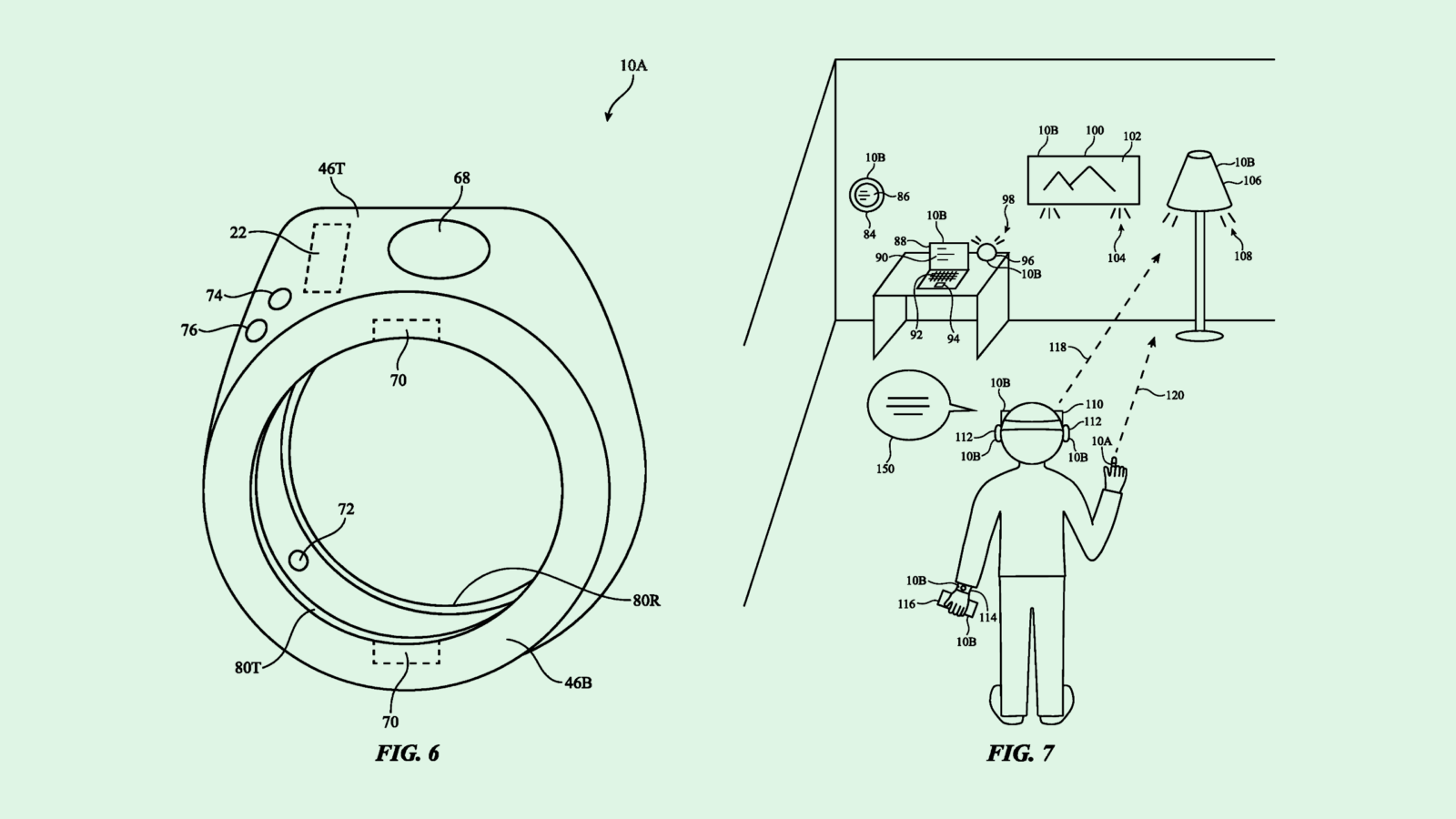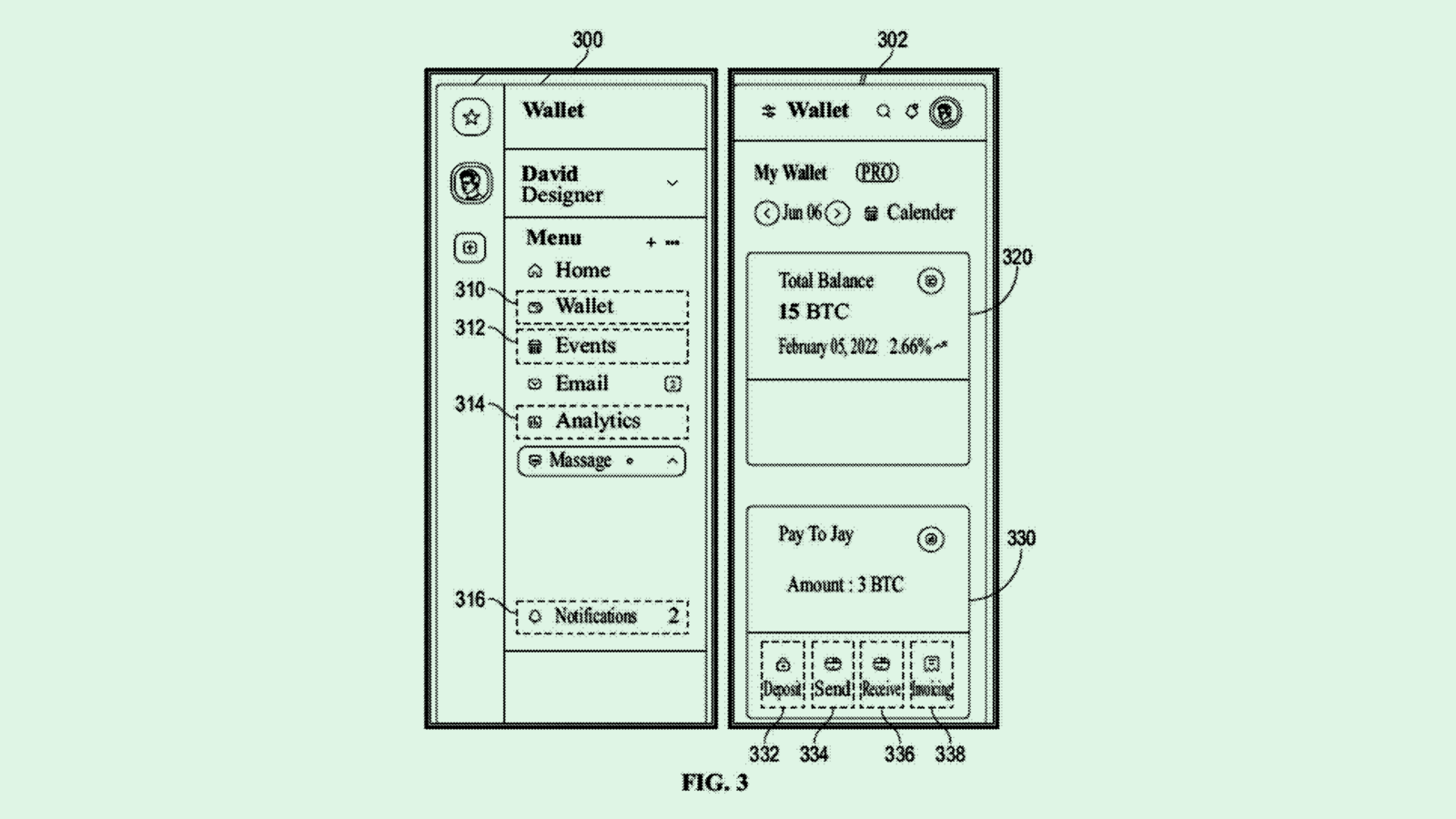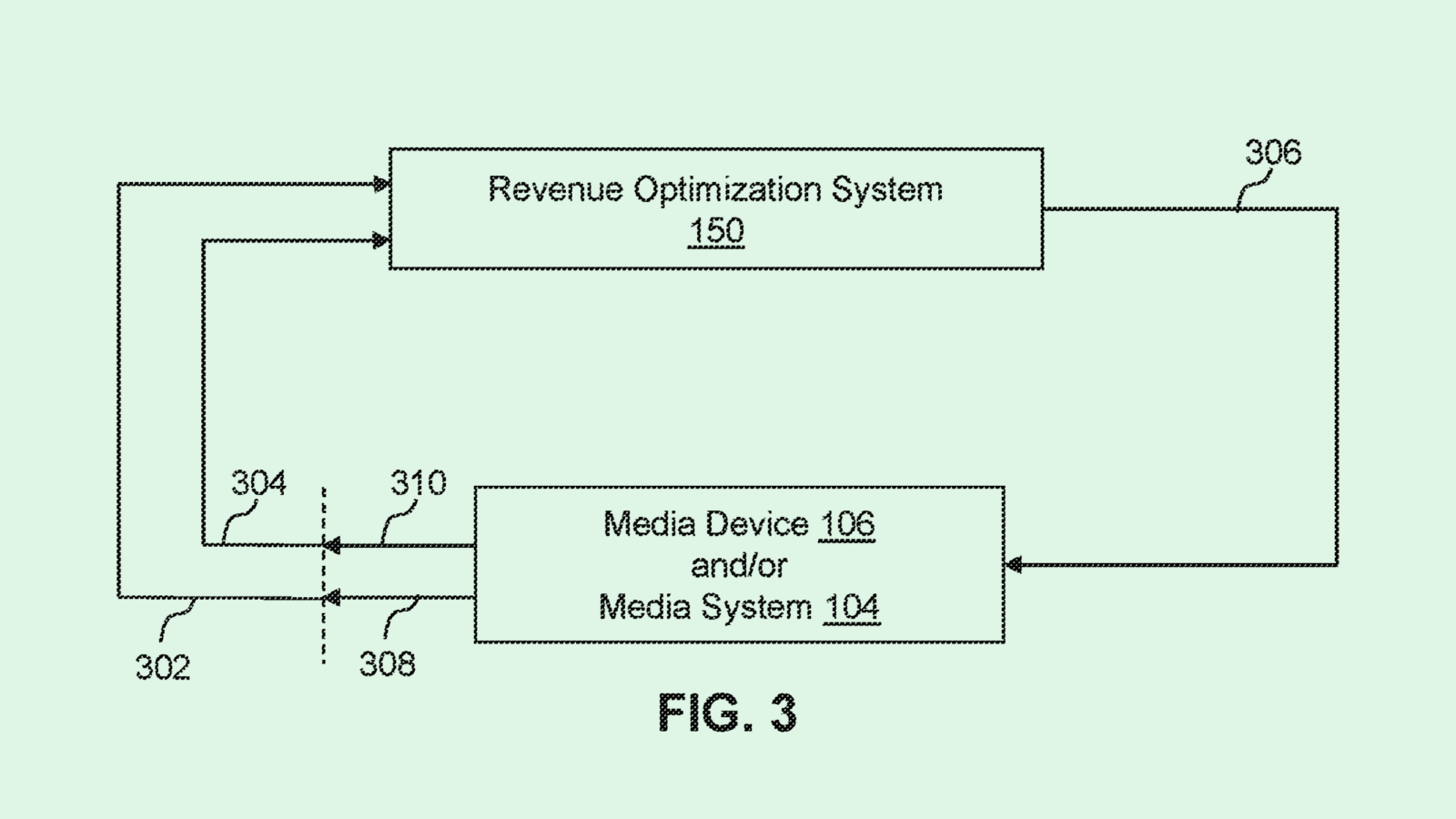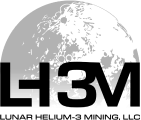Happy Monday and welcome to Patent Drop!
Today, an Apple patent for a user-tracking ring may reveal more about expansions to its product lineup — and a move to take on Oura and Samsung. Plus: Stripe wants to fortify blockchain transactions, and Roku strikes a balance with advertising.
Before we jump into today’s patents, a word from our sponsor. Lunar Helium-3 Mining CEO Chris Salvino is applying 30 years of eclectic leadership experience to one mission: harvest fuel from the moon for cleaner, safer nuclear energy on Earth. How? His company’s patented moon-mining technology. See how you can become a Lunar Helium-3 shareholder before they leave the launchpad.*
Let’s take a peek.
Apple’s Bling Ring
Apple wants to put a ring on it.
The company filed a patent application for a user-tracking “ring device.” Apple’s patent details a ring that can be used to monitor tons of different biometric signals, including health-related data, movements, voice input, gaze input, and more.
Apple noted that this ring can connect with and offer features from several different types of devices, as a “user may wish to take advantage of one or more of these features, but it can be cumbersome to constantly switch between electronic devices.”
Apple’s ring includes tons of different sensors for tracking and interaction with other devices. For example, the near-field communication sensor can log “health-related actions such as medicine intake,” and the device can track biometrics such as temperature, heart rate, or blood oxygen level.
An inertial measurement sensor can track gestures, such as pointing, for controlling equipment, and a small embedded microphone can pick up voices or other sounds “to infer the context in which the ring device is operating.”
The ring may work in tandem with devices, such as the Vision Pro, to facilitate interactions with virtual content in an artificial reality environment. It could also offer haptic output for “tactile feedback” to simulate “a desired texture sensation as a user is touching a real or virtual object.”
The ring could be configured to control devices throughout a user’s environment, such as smartphones, laptops, TVs, lamps, or thermostats, and create “a map of locations of electronic devices in the user’s home.”

This isn’t the first time we’ve seen Apple consider adding bling to its lineup. In February, Bloomberg’s Mark Gurman reported that the company was weighing a health-tracking ring, though no significant research had gone into the device at that point. The company also has filed several previous patents for high-tech rings.
But with smartphone competitor Samsung launching its smart ring in July, health tech firm Oura skyrocketing in popularity, and startups like Ultrahuman, RingConn, and Amazfit bringing their own offerings, Apple may be eager to jump into the market, said Thomas Randall, advisory director at Info-Tech Research Group.
“It looks like Apple is certainly trying to gear up to move into that market,” he said. “That’s a direct competitive move against Oura, or all these other similar [companies] logging health-related actions.”
If Apple does drop its own ring in the future, it has several major advantages on its side, said Randall. For one, the company’s walled-garden ecosystem means that all of its devices work seamlessly together. The ring described in this filing would provide another means for these devices to interact, he said.
“It’s certainly an advantage when you have a user buy into your broader ecosystem — then it’s almost like a completion game,” said Randall. “They might have the phone, the Mac, the watch, and now the ring to complete the set.”
Its other advantage is privacy. Apple already has a strong position in the health tech market with its smart watch, and has advertised privacy and data security as one of its biggest selling points. Given the sheer amount of data this ring could collect, security is vital.
But Apple has to get a few things right, Randall said: price and form factor. Since the market already has several popular competitors, and Apple’s ring may feature “overlapping capabilities” with its other offerings, consumers may not be interested if it’s far more expensive, he said. Plus, he added, it has to look and feel good enough for all-day wear.
3 Reasons to Invest in Moon Mining

Lunar Helium-3 Mining is pioneering the path to sustainable nuclear fusion. How? By harvesting Helium-3 from the moon—a resource critical to unlocking nearly limitless nuclear power.
Here’s why you should invest in Lunar Helium-3:
- Expert Leadership: CEO Chris Salvino’s 30 years of leadership and expertise in trauma surgery, aerospace, and mining are an ideal combination to tackle complex problems in the energy sector.
- Innovative Technology: They’ve filed for 7 patents and even applied for a NASA grant, an edge in the $40T fusion market.
- Future-Ready Vision: Cleaner, safer nuclear fusion can lead to more nuclear adoption across the world. That’s potentially limitless renewable energy still untapped.
You can now join this stellar journey. Invest in Lunar Helium-3 Mining as they work to transform the energy landscape.*
Stripe Catches Crypto Fraud
Stipe wants to make sure your transactions are all above-board.
The company is seeking to patent “computer modeling for fraud detection in blockchain-based transactions.” As Stripe steps back into the world of cryptocurrency, this tech aims to identify vulnerabilities and stop them in real time.
“Bad actors have created … novel and sophisticated methods and systems to take advantage of this technical shortcoming that is specific to virtual currencies,” Stripe said in the filing. “Therefore, electronic payment systems and applications face technical challenges in protecting their users against fraud.”
To mitigate fraud, Stripe’s tech relies on a trained machine learning model to monitor and detect when something seems out of the ordinary. When a user is about to perform a blockchain transaction, the model kicks into gear, and compares the current transaction to similar ones to determine a risk score.
Some facts that might indicate a higher risk score include fraud or dispute history related to an account or IP address, transaction amount, or number of transactions. If the score is high enough, then the user performing the transaction is warned via their digital wallet’s user interface. Stripe’s system may tell a user that a transaction is “in review” or block it entirely.

Stripe took six years off of cryptocurrency, and only reintroduced blockchain into its repertoire in April, starting with USDC Stablecoins, a digital currency pegged to the US dollar. Earlier this month, the company announced a partnership with crypto exchange Bitstamp to support Stripe’s fiat-to-crypto onramp across the EU.
The company had initially pulled back on cryptocurrency in 2018, claiming that it was too unstable. But as it once again tests the waters, this tech may help it steer clear of user scams. Though blockchain has transparency and immutability down pat, fraud detection tech like this could help boost trust in cryptocurrency transactions, said Jordan Gutt, Web 3.0 lead at The Glimpse Group.
“In an ideal world, all exchanges and decentralized protocols would have some type of fraud detection, but that’s just not the case right now in the industry,” said Gutt.
Plenty of firms have sought to take advantage of blockchain’s transparency and security for non-crypto purposes, such as data tracking, deepfake detection, and cloud services. But Stripe’s ubiquity as a payments tech provider, its reentry into digital currency, and its efforts to prevent fraud could help give the tech a better reputation, said Gutt. Plus, making it easier and more trustworthy for its network of merchants to accept digital currency only serves to help adoption, he said.
“The tides are changing a little bit,” said Gutt. “They probably see a strategic opportunity here to take their existing position and expand their share of the market.”
Roku’s Content ROI
Roku wants to get the most bang for its buck.
The entertainment tech company filed a patent application for a “reinforcement learning model for optimizing long term revenue.” Roku’s system essentially aims to get as much revenue as it can without ruining the user experience.
“By increasing the number of advertisements, as one example, the revenue can be increased,” Roku said in the filing. “However, the increase in the number of advertisements can result in poor user experience for the users.” Roku’s tech relies on AI to help it strike the right balance.
This system monitors the “user state” — the content users are currently watching, as well as profile information such as demographics, tenure, and activeness on the platform — to “personalize user actions based on different tolerance of the advertisement.” Along with tracking this information, Roku’s tech also determines the “revenue value” associated with the user.
The information is then fed to a reinforcement learning model, which gradually and subtly adjusts advertising output to avoid a sudden increase in ad activity that may cause user churn. The changes could relate to the type, frequency, and timing of ads.
This method is better for “capturing delayed rewards,” such as long-term revenue from increased watch time and user retention, Roku said.

This isn’t the first time Roku has taken an interest in making ads that don’t turn off viewers. The company has previously sought to patent a system for “emotional evaluation” of content as a way to guide ad placement without violating users’ privacy. It’s also researched ways to use generative AI to personalize content that could better tailor ads to user preferences.
Roku’s recent earnings report highlights its hot streak with ads: The company’s platform revenue unit, which includes advertising, rose 11% year-over-year to $824.3 million. The company noted in its earnings release that its ad performance outperformed the overall market.
However, the streaming industry is having some growing pains. While Netflix remains the king of the market as it continues to gain subscribers, tons of streamers are cutting costs.
Using AI to tailor ad content and delivery to the individual could help keep users engaged. Though the market for ad-supported streaming is getting increasingly crowded, recent surveys from the Interactive Advertising Bureau and the Video Advertising Bureau both indicate that the majority of Americans would rather watch ads than pay for subscriptions or premium tiers.
Extra Drops
- Meta wants to protect your biometrics. The company filed a patent for a way to protect data and user privacy of “neuromuscular-based gesture recognition” in a wearable device.
- Nvidia wants to keep an eye out for local landmarks. The company filed a patent application for “machine learning-based landmark perception” for autonomous machines.
- Google wants to know when you’re speaking Spanglish. The company is seeking to patent a way to use speech recognition to improve “cross-language speech synthesis”
What Else is New?
- Telegram CEO Pavel Durov was reportedly arrested for allegedly allowing a wide range of crimes due to a lack of moderators on the messaging app.
- IBM is shutting down its China research and development department, affecting more than 1,000 employees.
- Uber is facing a roughly $324 million fine from the Netherlands’ privacy regulators for breaching EU data transfer rules.
Patent Drop is written by Nat Rubio-Licht. You can find them on Twitter @natrubio__.
Patent Drop is a publication of The Daily Upside. For any questions or comments, feel free to contact us at patentdrop@thedailyupside.com.
Disclaimer
*This is a paid advertisement for Lunar Helium-3 Mining, LLC Reg CF offering. Please read the offering circular at https://invest.lh3m.com/.

